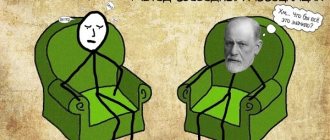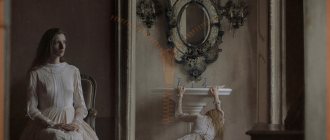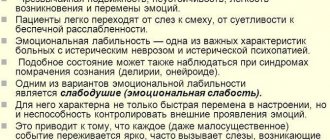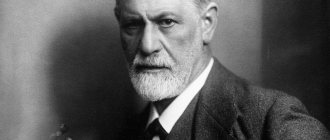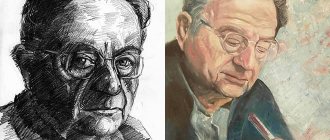Carl Gustav Jung is without a doubt an important name if we want to understand the history of psychology. His theories have been a source of both controversy and inspiration. It is not surprising that he is the founder of his own school of thought in the psychoanalytic field, the school of analytical psychology, also called complex and deep psychology.
For a long time, Jung was a student of Freud. However, he distanced himself from Freud mainly because he disagreed with his theory of sexuality. Moreover, Jung postulated the existence of a “collective unconscious” that precedes the individual unconscious.
“I know what I want: I have goals and opinions. Let me be myself, that's more than enough for me."
— Anne Frank
Jung was a restless intellectual who collected information from a variety of sources. In addition to neuroscience and psychoanalysis, Jung's theories were influenced by mythology, religion, and even parapsychology. One of his great interests was archeology, and this was probably his theory of archetypes. The theory of universal symbols present in the unconscious human mind.
Jung's personality type theory
For Carl Jung there are four basic psychological functions: thinking, believing, feeling and perceiving. In each person one or more of these functions have a special emphasis. For example, when someone is impulsive, according to Jung, it is because their “feeling and perceiving” functions take precedence over their “thinking and believing” functions.
Based on these four basic functions, Jung postulated that there are two basic character types: introvert and extrovert. Each has its own characteristics that distinguish it from the other.
Archetypes
Archetypes are innate tendencies within the collective unconscious that are the internal determinants of a person's mental life.
They direct human actions in a certain direction, somewhat similar to the way our animal ancestors behaved in similar situations. Archetypes reveal themselves in consciousness in the form of emotions and some other mental phenomena. They are usually associated with such important moments of life experience as birth and death, the main stages of the life path (childhood, adolescence), as well as with the reaction to mortal danger.
Jung explored the mythology and artistic creativity of a number of ancient civilizations, identifying the underlying archetypal symbols. It turned out that there are a significant number of such symbols that are inherent in all archaic cultures, even those that were so separated in time and space that direct contact between them was obviously impossible. He also managed to discover in the dreams of patients what he considered traces of similar symbols. This further strengthened Jung's commitment to the idea of the collective unconscious.
Four such archetypes are more common than others - Persona, Anima and Animus, Shadow, Self.
1. Anime and Animus archetypes are two components of one whole. They reflect Jung's assumption that each person carries within himself certain psychological characteristics of the opposite sex.
Anima reflects female unconscious (feminine) characteristics in a male character, and animus reflects male unconscious (masculine) characteristics in a female character.
Like most other archetypes, this pair originates in the deepest, most primitive layers of human ancestral experience, when men and women internalized certain emotional and behavioral tendencies of the opposite sex. Thus, every person has feelings, emotions and experiences of both sexes.
These archetypes not only cause each sex to have traits of the opposite; they also act as collective images that motivate each gender to understand and respond to the other.
2. The Persona archetype (Mask) is the mask that each of us puts on when communicating with other people. It includes our social roles and individual style of expression.
A persona represents us as we want to be perceived by society. It may not coincide with the individual's true personality. Jung's concept of Persona is similar to the concept of role behavior in sociology, when we act as we think people expect us to act in certain situations.
A person has both positive and negative aspects. The Dominant Persona can suppress, even stifle, individuality. Those who identify with their Persona begin to see themselves only in terms of their superficial social roles or façade. C. Jung also called the Persona the archetype of conformity. At the same time, the Persona is not only negative, it protects the Ego and the soul as a whole from various social forces and attacks aimed at it.
3. The Shadow archetype is the center of the personal unconscious, a focus for material that has been repressed from consciousness; this is a kind of reverse, dark side of the Self. It is most deeply rooted in man’s animal past. Jung considered it a kind of legacy of lower forms of life.
It includes tendencies, desires, memories, experiences that are denied by the individual as incompatible with his Persona or contrary to social standards and ideals.
The shadow represents the totality of all our immoral, violent, passionate and completely unacceptable desires and actions. Jung wrote that the shadow pushes us to do something that we would never allow ourselves to do in a normal state. When something like this happens to us, we tend to explain what happened by saying that something came over us. This “something” is the shadow, the most primitive part of our nature.
However, the shadow also has its positive side. It is a source of spontaneity, creative impulse, sudden insights and deep emotions, without which a normal, full-fledged human life is also impossible.
4. Archetype Self is the center of personality around which all other systems are grouped. It holds these systems together and provides the individual with unity, balance and stability. This is the central archetype of personality integrity, which integrates the conscious and unconscious in the human psyche.
The Self is both a true subject and an integral personality, and the goal of a person’s life, which he constantly strives for, but which he rarely achieves. Before the self can be embodied, the various components of the personality must undergo full development and individuation. According to K. Jung, a person can achieve balance only as a result of a long process of psychological maturation, which he calls individualization.
Extroverted type
Their interests are focused on external reality, rather than on their inner world.
They make decisions by thinking about their impact on external reality, and not on their own existence.
Their actions are carried out in accordance with what others may think about them.
Their ethics and morality are built depending on what prevails in the world.
These are people who can fit into almost any environment, but they really have a hard time adapting.
They are suggestible, easily influenced and tend to imitate others. They need to be recognized by others.
Strengths and weaknesses of extroverts
Each psychological type has its own strengths and weaknesses. For example, extroverts adapt well to changes in environment; they easily find a common language in any group. Jung's concept of psychological types describes extroverts as excellent conversationalists who can engage anyone in conversation with them.
Also, such people can be wonderful sellers or managers; they are easy-going and agile. Generally speaking, extroverts are ideally suited to life in today's superficial society of nosy materialists.
But not everything is so rosy in the fast-paced world of extroverts. As Jung's psychological types say, each of them has its own disadvantages. For example, extroverts are too dependent on public opinion; their worldview is based on generally accepted dogmas and concepts. They also often commit rash actions and actions that they later regret. Superficiality creeps into all areas of an extrovert's life; recognition in society and official awards attract them more than real achievements.
Introverted character
On the other hand, the introvert type has the following traits:
They are interested in themselves, their feelings and thoughts.
They orient their behavior according to what they feel and think, even though this may be contrary to external reality.
They are not overly concerned about the impact their actions may have on their environment. They worry about everything that satisfies them internally.
They struggle to adapt to their environment and adapt to it. However, if they manage to adapt, they will do so in a creative and complete way.
The structure of the human psyche in the concept of K.G. cabin boy
Jung believed that the personality structure consists of three parts - the collective unconscious, the individual unconscious (It) and consciousness (Ego).
Fig.1. Jung's structure of the psyche
Jung paid great attention to the unconscious and its dynamics, but his idea of it was radically different from Freud's. Jung moved away from Freudianism, believing that the unconscious cannot be reduced to the biological. In his opinion, the unconscious represents the mental experience of previous generations, is the sum of types of behavior, emotional reactions, images of spontaneous fantasies, dreams.
He viewed the psyche as a complementary interaction of conscious and unconscious components with a continuous exchange of energy between them. He considered the unconscious to be a creative, rational principle that connects man with all of humanity, with nature and the cosmos.
Intuitive introvert
These people are extremely sensitive to the most subtle stimuli. Intuitive introverts are the type of people who can almost guess what others are thinking, feeling or wanting to do. They are creative, dreamers and idealists. They struggle with “keeping their feet on the ground.”
- 8 Physical Qualities That Reveal Your Personality
- 2 Personality Traits That Indicate You Have a High IQ
Functions of consciousness
Describing psychological types, Jung identified four functions of consciousness, which, combined with a person’s inward or outward orientation, form eight combinations. These functions are significantly different from other psychological processes, which is why they were identified separately - thinking, feeling, sensing, intuition.
By thinking, Jung understood the intellectual and logical functions of a person. Feeling is a subjective assessment of the world based on internal processes. Sensation refers to the perception of the world through the senses. And under intuition is the perception of the world based on unconscious signals. To better understand Jung's psychological types, let's take a closer look at the functions of the psyche.
Feeling
The sensing extroverted type perceives the surrounding reality more acutely than other psychological types. Jung described this type as a person living here and now.
He wants the most intense sensations, even if they are negative. The picture of the world of such a subject is built on observations of objects in the external world, which gives sensing extroverts a touch of objectivity and prudence, although in reality this is not at all the case.
The introverted feeling type is extremely difficult to understand. The main role in the perception of the world for this psychological type is played by its subjective reaction to the world. Therefore, the actions of feeling introverts can be incomprehensible, illogical and even frightening.
